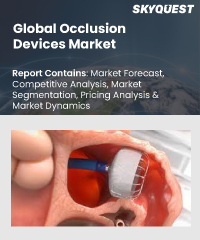
Report ID: SQMIG35A2550

Report ID:
SQMIG35A2550 |
Region:
Global |
Published Date: February, 2024
Pages:
157
|
Tables:
94 |
Figures:
76
In terms of the fastest-growing region, Asia-Pacific is witnessing significant growth in the occlusion devices market. Factors such as the rising prevalence of cardiovascular diseases, improving healthcare infrastructure, increasing healthcare expenditure, and growing awareness about minimally invasive procedures are driving market growth in the region. Additionally, the presence of a large patient population and expanding medical tourism further contribute to the market's growth in Asia-Pacific.
On the other hand, North America holds the largest market share in the occlusion devices market. This can be attributed to factors such as the high prevalence of cardiovascular diseases, favorable reimbursement policies, robust healthcare infrastructure, and technological advancements. The presence of key market players and ongoing research and development activities in the region also contribute to its market dominance in occlusion devices.
Our industry expert will work with you to provide you with customized data in a short amount of time.
REQUEST FREE CUSTOMIZATIONWant to customize this report? This report can be personalized according to your needs. Our analysts and industry experts will work directly with you to understand your requirements and provide you with customized data in a short amount of time. We offer $1000 worth of FREE customization at the time of purchase.

Report ID: SQMIG35A2550